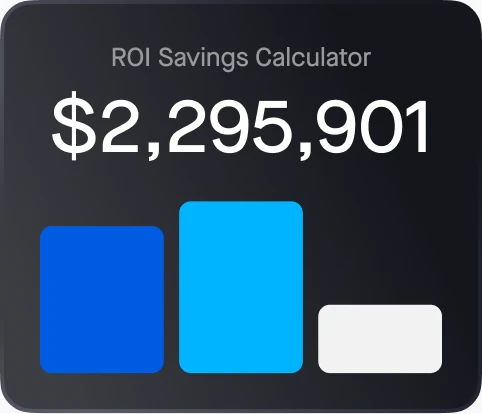Welcome to the Q1 edition of the Motive Monthly Economic Report! As we kick off 2025, we are shifting our reporting cadence from monthly to quarterly updates. This shift will provide a more comprehensive view of the key economic factors impacting the supply chain and logistics landscape, allowing us to track larger trends and better predict future market movements.
By tracking the volume of goods moving into distribution centers and crossing borders, Motive has a clear view of the flow of inventory before it reaches stores. Our unique insights into what’s happening between consumer spending and the movement of goods serve as a leading indicator of consumer demand, retail inventory changes, and other market trends before they fully materialize. Keep reading for a front-seat view into key factors currently influencing the U.S. economy.
Motive Predictions
- Retailers are poised for moderate gains in Q1 as a healthy economy fuels consumer spending across sectors.
- Import rates will continue to rise in Q1, despite continued concerns around the impact of tariffs.
- Long-term tariff impacts on cross-border activity are expected to be moderate; much of the current tariff speculation is overblown.
- We expect a nearly 30% spike in new carrier registrations in January as the trucking market continues its positive trajectory.
Top Findings
- Retailers saw strong performance in Q4 and the holiday season, indicating a healthy economy and strong consumer spending.
- Consumers are increasingly shopping in person.
- Trade with Mexico hit new records; imports through the Laredo port increased ~30% year-over-year.
- While Mexico trade continues to rise, truck crossings into the U.S. from Canada dip
- Anticipated tariffs and East Coast labor strikes have driven surges in south-border trade.
- Q4 carrier exits are down a whopping 69% year-over-year.
Q4 showed strong retail performance, and we expect growth to continue in Q1
Motive’s Big Box Retail Index was up 3.8% year-over-year in the peak week leading up to Christmas, with department stores, apparel, and electronics increasing 41.8% compared to 2023. This strong performance indicates high demand for inventory in the final weeks before the holiday. Changes to retailers’ restocking patterns, particularly when bringing inventory into stores, also contributed to this year-over-year spike. In 2024 we saw peak movement occur a week later than in 2023, and when we compare the peaks of 2023 and 2024, we saw a 32% increase in 2024. The overall positive performance of the Big Box Retail Index is a sign of a healthy economy and consistent consumer spending.






The home improvement sector also had a strong close to the year, increasing +47.7% in Q4 compared to Q4 2023. Grocery and superstores saw moderate growth, increasing +12.8% compared to last year. The sales-to-inventory ratio remained flat at 1.29 in November, but inventory levels are expected to rise in 2025. Historically low inventory-to-sales ratios over the past year resulted from lean supply chains, overcapacity, and high interest rates, which discouraged overstocking. As supply chain costs rise and interest rates decline, retailers may adopt more defensive inventory strategies to manage market uncertainty. Strong Q1 sales are anticipated across department stores, home improvement, electronics, and grocery sectors. Lower interest rates will support this growth, but higher inventory levels could expose retailers to risks from global disruptions, such as tariffs, strikes, or sourcing challenges, potentially requiring strategy adjustments going into Q2 and beyond.
The increase in brick-and-mortar sales, reflected in the 41.8% increase across department stores with large brick-and-mortar sales, indicates consumers are increasingly returning to in-person shopping. We anticipate continued growth in physical retail stores through Q1, with department stores and grocery chains seeing the most gains.
Trade with Mexico remains strong, and Q1 should see continued growth, regardless of new tariff policies
2024 was a record year for goods crossing the southern border, with October marking the highest number of truck crossings on record at 677,000, surpassing May 2024 records of 675,000 truck crossings. November’s numbers followed seasonal patterns, showing a decline compared to October. Laredo, which handles about 40% of imports by road, saw a significant 28.5% year-over-year increase in Christmas imports, reflecting robust freight movement from Mexico, the U.S.’s largest import partner. Nearshoring manufacturing capacity in Mexico, fueled by significant foreign investment, is set to further drive positive import growth.



On the West Coast, ports like the Port of Los Angeles experienced very strong performance. In November, the port saw a 22% increase in volumes, following a 34% rise in September. These surges were likely driven by demand for non-North American goods ahead of anticipated new tariffs and in anticipation of potential labor strikes on the East Coast. Notably, imports from China in November rose 6.7% year-over-year, reflecting a push to secure inventory before potential tariffs. However, compared to 2021, when imports from China peaked, import rates are down by 21.7%, highlighting a significant shift in trade volumes. This underscores the impact of evolving supply chain strategies, trade policies, and efforts to increase regional manufacturing and sourcing.

While Mexico trade was on the rise at the end of last year, truck crossings from Canada showed a contrasting trend, dipping almost 5% year-over-year in November 2024 and remaining relatively flat compared to prior years. Unlike Mexico, where trade by truck has seen significant growth, Canada has not experienced the same momentum as a trading partner. Comparing September-October 2024 to the same period in 2018 (shortly after tariffs took effect), truck crossings from Mexico increased by 19.3%, whereas Canada saw a decline of 4.7%. This highlights the differing dynamics between the two key trading partners and underscores the stronger trade momentum Mexico continues to maintain.

We anticipate a rise in trade activity in January, driven by strong demand and the delivery of previously ordered parts and equipment. While near-term volatility is expected — particularly for imports from outside North America, including intermittent surges in low-cost goods from China — Mexico and Canada will likely remain strong trade partners due to consistent demand, higher-value goods, and policy pressures favoring regional sourcing.
Drawing from historical trends like the 2018 tariff rollout, we expect a phased approach to potential policy changes, with consultation periods extending into mid-year. Companies’ increasingly diversified supply chains should help mitigate disruptions, and we remain optimistic about a positive Q1, buoyed by preemptive inventory adjustments and ongoing supply chain concerns.
Trucking market moving toward a strong 2025 and potential boom cycle
In Q4, 3,789 carriers exited the market, a dramatic 69% decrease compared to Q4 2023, which saw 12,000 carriers exit. These exit levels signal a significantly more stable market than a year ago and a steady positive trajectory, especially considering the seasonal spike of carrier exits we typically see in December and January. Looking back at the year overall, we saw 19,000 carriers exit the market in 2024, compared to 40,000 in 2023, a significant decrease of 50.8% year-over-year. We expect January 2025 exit rates to be very similar to December 2024, with Q1 staying largely flat before ramping up later in the year.

New carrier registrations increased 2.8% year-over-year in Q4, with 21,352 carriers registering. November and December 2023 saw the lowest numbers of new carriers entering the market compared to other months of the year, reflecting typical seasonal trends. However, January typically sees a 28.6% jump in registrants from December, and we expect January 2025 to follow this pattern, with Q1 overall experiencing a significant spike in new registrations. This growth would position 2025 to start with approximately 8,500 registered carriers, representing an increase of 7.1% compared to January 2024.

We anticipate rising freight rates, lower interest rates, and sustained demand for cross-border trade to continue driving the trucking market’s positive momentum throughout Q1. In Q4, strong retail performance fueled increased demand for freight services, a trend expected to persist into 2025. Increased demand is likely to spur the formation of new small businesses, further fueling growth in the market and creating more jobs. Freight volumes are projected to rise significantly in the first half of 2025, supported by stabilizing interest rates and increasing trade with Mexico. Additionally, sector-specific growth may benefit from policy changes, particularly in industrial sectors such as oil and gas, creating further opportunities for the trucking sector across consumer and commercial markets.
Summary
The Q1 2025 economic outlook is positive, with strong retail performance, rising trade with Mexico, and growth in the trucking market. Stabilizing interest rates, robust consumer demand, and higher inventory levels are expected to drive retail and freight activity. The trucking market is poised for significant growth in Q1, with new carrier registrations expected to jump nearly 30% in January. Declining carrier exits and policy-driven opportunities, particularly in industrial sectors like oil and gas, are creating a more stable and optimistic outlook for the sector with a potential boom cycle in the future.
Data Methodology
The Motive Quarterly Economic Report uses aggregated and anonymized insights from the Motive network and publicly available government data from the Federal Motor Carrier Safety Administration, U.S. Census, and U.S. Department of Transportation.




